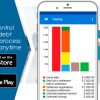American Debt on the Comeback Trail

MASSIVE DEBT ACCUMULATION FROM CREDIT CARDS, STUDENT LOANS, AND AUTO LOANS
It required almost 10 years, but U.S. debt has made a HUGE turnaround – in the wrong direction.
More money has been borrowed by Americans than at the credit crisis apex in 2008.
The Federal Reserve Bank of New York recently reported that total household debt in the United States had reached a new high— $12.7 trillion — in the first quarter of 2017. This growing debt level demonstrates that millions of Americans have sufficiently repaired their credit to qualify for loans; thus generating consumer spending, which accounts for almost 70% of economic activity in the United States. The related debt empowers significant investments that help create financial peace of mind.
 THE BORROWING PEAK SIGNALS THE POTENTIAL FOR NEW RISKS TO THE ECONOMY
THE BORROWING PEAK SIGNALS THE POTENTIAL FOR NEW RISKS TO THE ECONOMY
One of the major factors behind the latest debt onslaught has been student loans, an ever-increasing burden that can stifle economic growth by preventing Americans from buying homes or spending on big-ticket consumer items.
The fear is that ballooning debt from credit cards and auto loans, as well as student loans, could put many Americans back into a hole, prompting a new wave of defaults, much like the one that accompanied the mortgage meltdown almost 10 years ago.
“This is not a marker we should be super-excited to get back to,” said Heather Boushey, the executive director at the Washington Center for Equitable Growth. “In the abstract, more debt signals optimism. But in reality, families are using debt as a mechanism to pay for things their incomes don’t support.”
AFTER 5-YEAR DECLINE, DEBT REACHED A NEW HIGH THIS YEAR
In late 2008, household debt began a decline that would continue for 19 consecutive quarters. During this period, many Americans stayed away from new borrowing. Total debt began to rise again in 2013, hitting a new high in this year’s first quarter. Households are borrowing differently than they did 9 years ago. Student loan debt, driven by soaring tuition costs, makes up 11 percent of total household debt, up from 5% in the 3rd quarter of 2008.
By comparison, mortgage debt is 68 percent of total debt, down from 73 percent during the same period (household debt figures are not adjusted for inflation). Student borrowers owe $1.3 trillion, more than double the $611 billion owed in 2008. About one in 10 student borrowers is behind on repaying their loans, the highest delinquency rate of any type of loan tracked by the New York Fed’s quarterly household debt report.
Still, the student loan market is nowhere near the size of the $8.6 trillion mortgage market, making student borrowing less of a threat to the global financial system than the bad housing loans that touched off the financial crisis nearly a decade ago. Hoping that a college degree who help provide a higher paying job, students have gone deep into debt. But many students found wages to be lower than expected; resulting in more debt than they can comfortably pay back – if at all.
 SettleiTsoft COULD MAKE A BIG DIFFERENCE FOR DEBTORS
SettleiTsoft COULD MAKE A BIG DIFFERENCE FOR DEBTORS
SettleiTsoft® is a web-based and mobile accessible platform that offers 24/7 assistance to debtors and creditors to facilitate and streamline the debt negotiation process. This intuitive, transparent and secure online debt settlement process gives consumers complete control of negotiations as to the terms of their debt settlements and creditor payment agreements. The software displays step-by- step instructions, with topic-specific videos in every section of the software.
By utilizing the SettleiTsoft platform, debtors are establishing this electronic method of communications as their preferred manner of negotiation, which should then stop collection calls from creditors and allow the debt obligation to be amicably resolved.
The SettleiTsoft Team is committed to the ongoing improvement of this powerful debt negotiation platform, helping consumers alleviate stressful collection activities and achieve financial stability.



 Login
Login






